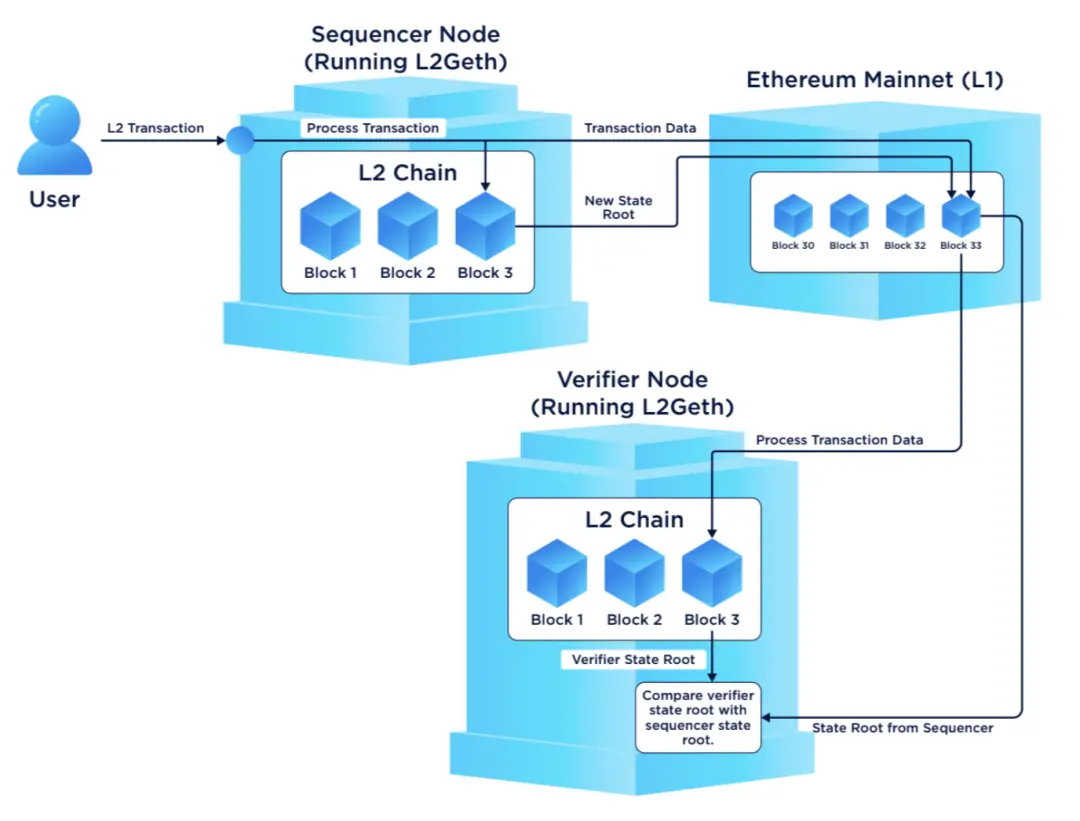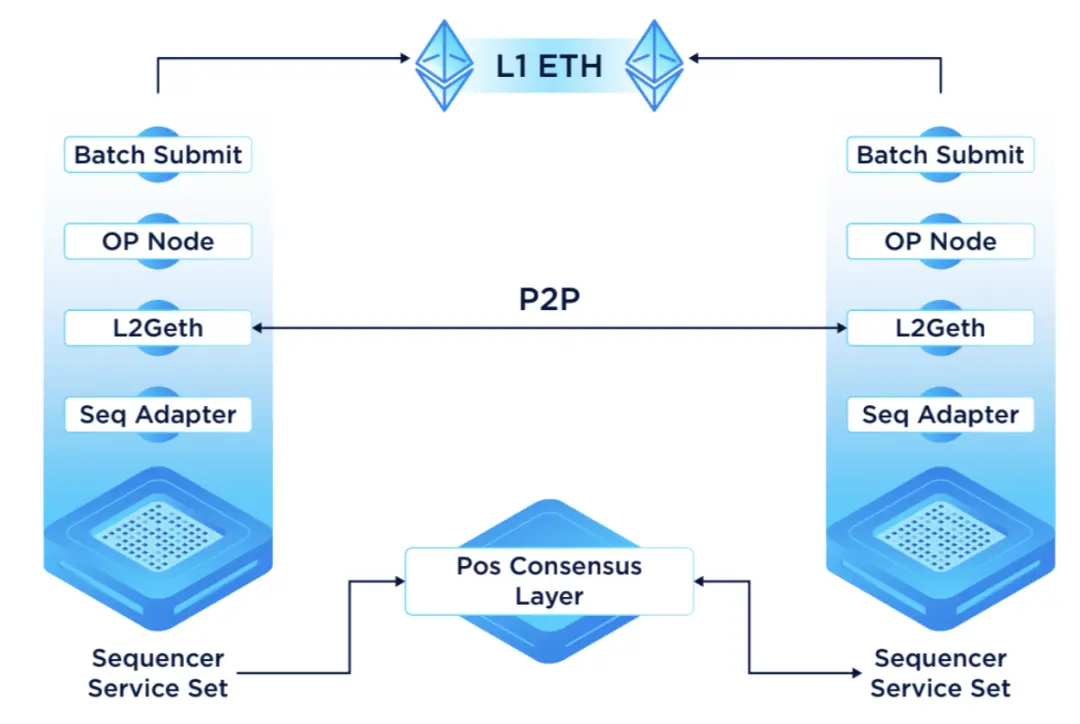Detailed explanation of Metis technical advantages, opening a new chapter in decentralization
Author: Biteye Core Contributor Wilson Lee
Editor: Biteye Core Contributor Crush
Background Introduction
On April 10, A16z Crypto released the zero-knowledge solution Jolt to accelerate and simplify blockchain scaling operations.
Jolt integrates SNARK (Succinct Non-interactive Argument of Knowledge), allowing developers to quickly create SNARK-based L2 solutions. The team also stated that Jolt is up to 2 times faster than current zkVMs.
ZK technology is one of the main threads running through the cryptocurrency industry, and ZK-Rollup has been referred to by Vitalik as a long-term solution for Ethereum scaling. A16z's launch of Jolt last August and its official release this year indicates that ZK-Rollup remains a long-term and promising track.
Many players have entered the ZK-Rollup space, leading to a more segmented technical classification to differentiate projects, with EVM compatibility being the most representative classification standard.
Due to historical reasons, EVM has many ZK-unfriendly designs; however, many existing projects were built on EVM in their early stages, and ZK-Rollup is still seen as a future scaling solution. Therefore, the vast majority of ZK-Rollup projects naturally face the trade-off between being more compatible with EVM or more compatible with ZK.
ZKM, incubated by Metis DAO, proposes a universal zkMIPS solution from a more fundamental perspective.
zkMIPS achieves the conversion of the program execution process to ZKP by using a lower-level MIPS instruction set, which not only supports EVM but can also be compatible with other VMs, such as MoveVM and RustVM, opening the door for ZK-Rollup to a more diverse developer community.
This article will provide readers with an in-depth analysis of Metis's efforts and progress in ZK and decentralized Sequencer.
ZKM and Hybrid Rollups: Harmonizing OP and ZK
Metis's impressive performance in the market is attributed to its innovative Hybrid Rollups mechanism, which combines fraud proofs and validity proofs, thus leveraging the advantages of both.
The zkMIPS technology of ZKM provides solid compatibility support for Metis's Hybrid Rollups, enabling an organic integration of ZK and EVM.
Mechanism and Advantages of Hybrid Rollups
In Hybrid Rollups, key roles include:
Sequencer: Responsible for receiving and processing user transactions, determining the optimal order of transactions, and packaging them for publication to the consensus and data availability layer.
Proposers: Evaluate the transactions and state roots submitted by the Sequencer and record them in the State Commitment Chain (SCC).
Verifiers: Verify the state roots on the Rollup chain, ensuring the correctness of transactions and preventing fraudulent activities.
In standard L2 solutions, the Sequencer collects and processes transactions, then publishes the transaction data to the Ethereum mainnet (L1). This process requires L1 to perform final data validation and confirmation, ensuring security and consistency.

Hybrid Rollups adopt a mixed approach to handle and optimize L2 transactions, with the following steps:
1. Initiation and Processing of Transactions:
Users initiate transactions on L2.
The Sequencer receives and processes these transactions, deciding their order in the Canonical Transaction Chain (CTC).
2. State Submission and Verification:
Proposers evaluate the transactions and submit the state root to the SCC.
Verifiers audit the state root in the SCC to ensure its accuracy.
3. Generation and Verification of Zero-Knowledge Proofs:
Prover reads data from L1 and generates ZK proofs, which is a key feature of Hybrid Rollups, allowing the system to verify the validity of transactions without revealing specific transaction details.
Once the ZK proof is generated, if it is not submitted on time, the Verifier will initiate the fraud proof process, which may penalize the Sequencer.
4. Final Confirmation of Data and State:
Through smart contracts, once the ZK proof is verified, the transaction is finalized.
A smart contract bridges L1 and L2, ensuring the secure transfer of funds and states.
The design of Hybrid Rollups offers several significant advantages:
Efficiency and Cost-effectiveness: By using ZK proofs, Hybrid Rollups can handle more transactions while consuming less gas.
Enhanced Security: Combining traditional fraud proofs and ZK proofs ensures transaction security and correctness even in the face of potential malicious behavior.
Scalability: Utilizing recursive proofs, Hybrid Rollups can handle large-scale transactions without sacrificing performance, supporting a wider range of blockchain applications.
Compatibility and Flexibility: Supporting various smart contracts and programming languages allows developers to easily migrate existing applications to Hybrid Rollups.
How zkMIPS Achieves Good ZK Compatibility
The core idea of ZK is to convert the program execution process into a mathematically verifiable proof, allowing everyone to easily verify the correctness of program execution without needing to re-execute the program. The challenge lies in how to transform any program logic into a relatively stable mathematical proof.
Developers typically use high-level languages for program development, and different high-level languages "communicate" with hardware using different logic.
As a result, the implementation paths of existing ZK projects are often incompatible. Scroll directly writes circuits for each opcode of EVM, achieving opcode-level equivalence that accurately reflects EVM but comes with a huge engineering burden;
Polygon zkEVM creates a custom VM with optimized performance, directly converting EVM bytecode into VM bytecode, achieving opcode-level equivalence more efficiently, but the introduction of a large amount of custom code may deviate from EVM in the long run;
zkSync creates its own VM (SyncVM) and defines its own algebraic intermediate representation (AIR) based on registers, then builds a dedicated compiler to compile Yul (an intermediate language that can be compiled into bytecode for different EVM versions, considered a lower-level Solidity) into LLVM-IR, and then compiles it into instructions for the custom VM, achieving Solidity-level compatibility, but it cannot directly use existing Ethereum tools, and the conversion between languages may require re-auditing the program;
StarkNet abandons EVM compatibility and directly uses its own low-level language (Cairo) to run a custom smart contract VM (Cairo VM) to achieve extreme ZK efficiency.
Compared to the solutions of the aforementioned projects, ZKM chooses a more inclusive path: zkMIPS.
MIPS, which stands for "Microprocessor without Interlocked Pipeline Stages," is a simple microprocessor instruction set that originated in 1985.
The basic principle of MIPS is to simplify complex microprocessor instructions to their most basic form, which not only improves processing speed but also reduces the complexity of executing programs.
In the zkMIPS system, this instruction set is used to achieve the conversion of programs to ZK proofs.
The implementation process of zkMIPS is as follows:
Conversion of Programs to MIPS: First, smart contracts or programs written in high-level programming languages (such as Solidity or Rust) are compiled into the MIPS instruction set. This step transforms higher-level abstractions into specific operations that can be executed at the hardware level.
Generation of ZK Proofs: Subsequently, these MIPS instructions are used to generate corresponding zero-knowledge proofs. Due to the simplified nature of MIPS, this step is computationally more efficient, allowing for faster proof generation without sacrificing security.
Advantages of zkMIPS
Compatibility: zkMIPS not only supports EVM-compatible Solidity but also supports other mainstream development languages such as Rust and Move. This allows zkMIPS to serve a broader blockchain development ecosystem, bringing more application possibilities.
Cost-effectiveness: Due to the efficiency of the MIPS instruction set, zkMIPS can significantly reduce computational costs when generating zero-knowledge proofs, increasing the overall sustainability of the system.
Recursive Proofs: zkMIPS supports recursive proofs, allowing multiple proofs to be aggregated into a more manageable unit, which is crucial for improving system scalability.
In fact, the advantages of MIPS have already been integrated into projects like Optimism. The Cannon mechanism of Optimism converts executed programs into MIPS, making it easier and more efficient to find errors and re-execute when the execution process is challenged.
Metis has also followed this trend by integrating Cannon into its ecosystem, further validating the practicality and efficiency of zkMIPS technology.
Decentralized Sequencer: Decentralization and Sustainability
In addition to using Hybrid Rollups to combine the advantages of OP and ZK, Metis is also actively promoting the implementation of decentralized Sequencers, setting a decentralized example for Rollup.
In traditional Rollup models, a single Sequencer can effectively handle transactions and data but also concentrates significant power, which may lead to various risks:
Operational Risk: If the Sequencer fails or is attacked, the entire system's transaction processing will be interrupted.
Censorship Risk: The Sequencer has the ability to selectively process or reject transactions, which may limit users' access to specific decentralized finance (DeFi) protocols or services.
Manipulation Risk: In transaction ordering, the Sequencer may prioritize its own transactions, gaining undue benefits by increasing transaction fees, known as maximum extractable value (MEV).
To address these issues, Metis has designed a decentralized Sequencer pool composed of multiple Sequencer nodes that collectively aggregate, order, and execute transactions. This design ensures the fairness and transparency of the system:
Consensus Mechanism: More than two-thirds of the Sequencer nodes must reach consensus on the state of each new block before submitting transaction batches to the Ethereum mainnet (L1).
Multi-Party Computation (MPC) Signatures: Before transaction batches are submitted to L1, the authenticity of the batches is verified through MPC signatures, ensuring data accuracy.
Advantages of Decentralized Sequencer:
Enhanced Security: By having multiple nodes make decisions collectively, the risk of single points of failure is reduced, increasing the robustness and security of the network.
Reduced Censorship and Manipulation Possibilities: The presence of multiple Sequencers makes it difficult for a single node to manipulate or censor transactions, protecting users' transaction freedom.
Stability and Redundancy: The system supports smooth rotation of Sequencers, minimizing the impact of failures or interruptions, thereby improving the overall stability of the network.
In Metis's decentralized Sequencer model, each node consists of several key components:
L2 Geth (including OP-Node): Responsible for transaction ordering and block assembly.
Adapter Module: Acts as an intermediary for interaction with other external modules (mainly PoS nodes).
Batch Proposer: Responsible for constructing transaction batches and submitting them to L1 after obtaining approval from multiple Sequencers.
PoS Nodes: Coordinate between Ethereum, consensus, and Metis layers to ensure the secure locking of assets and reward validators.
Consensus Layer: Contains a set of Tendermint PoS nodes running in parallel with the Ethereum mainnet, ensuring operational efficiency without hindering the mainnet's progress.

Through this design, Metis's decentralized Sequencer pool not only enhances the fairness and transparency of transaction processing but also strengthens the security and stability of the network by decentralizing power, which are key elements in building a trustworthy and sustainable blockchain ecosystem.
Conclusion and Outlook
Metis's technological and conceptual advantages lay a solid foundation for future development. Its Hybrid Rollups based on zkMIPS are expected to solve compatibility issues for ZK-Rollup, bringing a more diverse developer ecosystem;
The promotion of decentralized Sequencers demonstrates the team's vision for decentralization. As Metis's ecosystem continues to mature, we have reason to believe that Metis will become a dark horse in the future L2 competition, creating continuous value for users and developers.










